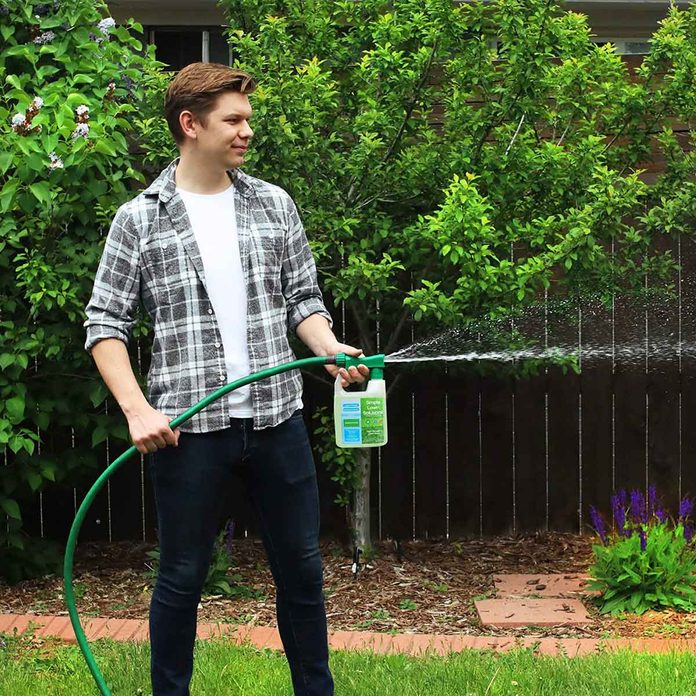7 Best Lawn Fertilizers for Spring

Spring Lawn Fertilizer Buying Considerations
To achieve a thick, lush lawn that will be the envy of your neighbors, establish an appropriate fertilizer regimen when the spring growing season begins. Before you rush into purchasing and applying a fertilizer, however, be mindful of these considerations.
- Timing: “Don’t apply fertilizer until your lawn has fully come out of its dormancy or else it won’t be effective,” says Sod Solutions Chief Technology Officer Drew Wagner. “Instead, use this time to start scoping out fertilizers that fit your lawn’s needs.”
- Soil composition: The health of your grass is largely determined by the health of your soil, which provides the right nutrients to keep your lawn flourishing from spring through fall. If you’re not sure what nutrients may be lacking in your soil, collect a sample to be analyzed. Choose a fertilizer based on the results so you can be sure you’re providing the correct nutrients in the appropriate proportions to kick-start the growing season.
- Growing region: Depending upon where you live, you may have warm-season grass (Zoysia or St. Augustine in humid regions or Bermudagrass in hot, arid climates) or cool-season grass (bluegrasses, ryegrasses and fescues, for example). It’s important to know your growing region and type of turfgrass to determine the most active growing period when your lawn needs extra nutrients. For cool-season grasses, those periods are early spring and early fall. For warm-season grasses, they’re every four to eight weeks during active summer growth. Different types of grasses also flourish with different fertilizer formulations. Applying the wrong ingredients in the spring can damage your lawn during its delicate growing period.
- Fertilizer form: Most fertilizers come in granular or liquid form. Granular fertilizers are generally less expensive and have slow-releasing formulations, so one application in the spring can last throughout the growing season. Liquid fertilizers are easier to apply uniformly. Many come in a bottle that you simply attach to the end of your garden hose and are quickly absorbed by your grass, but may need to be applied repeatedly. “Liquid fertilizers also have less salt content, which is why they are usually better as starter fertilizers for spring seedlings,” says Wagner. “Granular fertilizers contain a lot more salt and roots tend to steer away from them for this reason — especially if there’s also a lot of nitrogen and potassium.”
- Fertilizer ingredients: Fertilizers generally contain the three primary macronutrients plants need to thrive: nitrogen (N), phosphorus (P) and potassium (K). Every fertilizer lists three numbers on the label, usually right above or below the product name. These three numbers are the fertilizer’s N-P-K ratio, or the proportion of the three main ingredients in percentage by weight. The optimal N-P-K ratio varies from season to season, based on the nutrient requirements of turfgrass for the upcoming weather and temperatures. Many early spring fertilizers have a higher nitrogen level to get the turfgrass growing early and recover from the stresses and injury of the cold winter season.
No comments